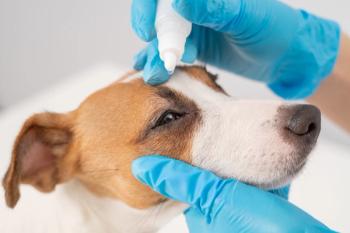
Veterinary ophthalmic exams: 10 questions to ask clients
Veterinary technicians: Help your patients see more clearly-learn your role during ophthalmic exams.
Technicians, you'll see patients first so make sure you ask the pet owner the right questions. At CVC in Kansas City, Dr. Lynsey Smith, DACVO, of Eye Care for Animals in Austin, Texas, recommended you ask for the pet's:
- History
- Age
- Breed
- Sex
- Weight
- Lifestyle (The sooner you know this, the sooner the you can issue a realistic treatment plan—it's harder to medicate an outdoor cat six times a day.)
- History with trauma (Pets' eyes tend to "pop out" due to trauma.)
- Medications
"It's also good to know what your clients think before you examine the patient," Dr. Smith says. To get some more background information, ask your clients the following questions about their pets:
1. Which symptoms did you notice first?
2. How long has the problem been going on?
3. What treatment plan are you implementing (if any)?
4. How well do you think your pet can see?
5. Is the pet’s vision better or worse in a dark room vs. a fully lit room? (Poodles, for example, have trouble seeing at night anyway so suggest putting night-lights around the house.)
6. Has the pet experienced any weight loss or gain? Was the weight change sudden or gradual?
7. Is the pet bumping into things?
8. Are there any other systematic problems?
9. Can you tell if the pet is in pain?
10. Is the pet squinting, rubbing its eyes, or acting lethargic? (These are all signs that the pet is in pain.)
“Sometimes the problem is breed-related and we can’t do much about it,” Dr. Smith says. “Luckily, the discharge doesn’t always bother the dog as much as the owner." Resist the urge to clean the pet's eye: It's important to leave the discharge so the veterinarian can see what the client sees at home.
After you ask the important questions, take the pet into an exam room where you can close all doors and window shades so it’s dark. “It’s much easier for the doctor to examine the patient with one bright light he can point at the problem,” Dr. Smith says. Reveal your findings to the doctor and hold the patient’s head while he or she examines the patient. “It’s hard to examine a dog whose head is moving around,” Dr. Smith says."Technicians, you play a very important role in the exam room."
Newsletter
From exam room tips to practice management insights, get trusted veterinary news delivered straight to your inbox—subscribe to dvm360.




